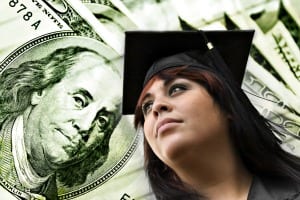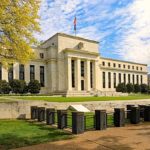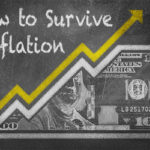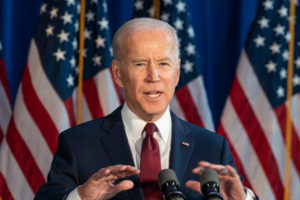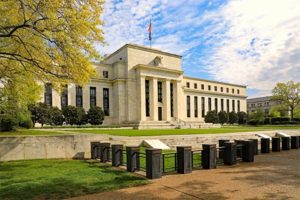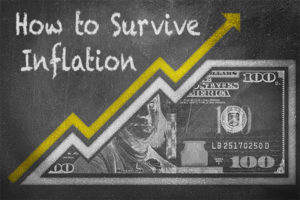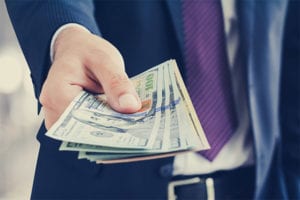Because Student Debt is Nondischargeable in Bankruptcy, There’s Only One Option Left
Maybe it’s time to resurrect debtors’ prison. It seems to be the only way in which people with unmanageable student loan obligations will ever be able to pay their “debt to society.”
After all, in 1976, Congress made federal student loan debt nondischargeable in personal bankruptcy proceedings, meaning that even if you’re dead broke with absolutely no ability to repay, you can never extinguish your student loan debt, unlike the way you can credit card charges, medical bills and past-due utility bills.
Then in 2005 Congress extended the prohibition against discharge to all private student loans, as well (except in difficult-to-prove cases of “undue hardship”). That made it obvious that our nation’s lawmakers wanted to equate student loan debt with all the other types of financial obligations that not only are nondischargeable in bankruptcy but also are criminal, to boot: tax evasion, embezzlement and non-payment of alimony or child support, to name a few.
Yep, according to our millionaire members of Congress, taking out a student loan to pursue an education – average student loan debt in 2012, was $27,000 – not only must relegate one to a lifetime of indebtedness, but it also should equate the borrower with the rest of society’s crooks, fraudsters and freeloaders.
Why Was Student Debt Made Nondischargeable?
Ah, but let’s not be too harsh or hasty. Was there any valid justification for making student loans nondischargeable, in the first place?
Well, the argument goes that federally-backed loans, which make up more than 85 percent of the $1 trillion loan balance carried by former and current American students, should not be allowed to go unpaid because it would mean putting the nation’s taxpayers on the hook if the loans are not dealt with. And there is some justification for that point of view.
But even if you agree that there is an ethical responsibility for someone to repay the rest of us for loaning him or her the money to go to college, why were private loans, which now total some $150 billion, added to the revision of the U.S. Bankruptcy Code through the passing the Bankruptcy Abuse Prevention and Consumer Protection Act of 2005?
Turns out that story isn’t as morally defensible.
Private Student Loans Make Banks Lots of Money
The short answer is that the nation’s banks and powerful financial institutions wanted to make private student loans even more lucrative and less risky for their lenders. Not that they were such a bad business to begin with.
Private student loans carry much larger interest rates than their federally backed counterparts. Bloomberg News reported last year that rates on some J.P. Morgan loans topped 10.25 percent. That’s nice work if you can get it, especially since the big banks are borrowing their own money at interest rates just a fraction above zero.
And unlike government loans, private loans have none of the same built-in consumer protections like flexible repayment options, deferral, or forbearance in times of economic hardship. So making them nondischargeable, as well, was just a firmer guarantee that there was little chance borrowers could avoid repaying them for any reason.
Finally, the banksters and their friends in the securities markets didn’t like the credit risks involved when securitizing private student loans that didn’t have additional assurances against default. Making them nondischargeable increased their recovery rates above those of other unsecured consumer loans like credit cards, and thus their value as collateralized debt obligations rose.
Because Congress has a tendency to listen when the banks want something, it decided in 2005 that it was in the “national interest” to let the banks have their way.
The score: Banks = everything. Borrowers = indentured servitude.
Is Change Possible?
Can anything be done to fix this? The general rule in Washington is that no matter how bad a piece of legislation is, it’s almost impossible to repeal or replace with something fairer or more reasonable.
Not to say that some intelligent lawmakers aren’t trying.
Senate Bill S. 114, the “Fairness for Struggling Students Act,” co-sponsored by Dick Durbin (D-IL), Sheldon Whitehouse (D-RI) and Jack Reed (D-IL), and House Bill HR 532, the “Private Student Loan Bankruptcy Fairness Act,” co-sponsored by Steve Cohen (D-TN.) and Danny Davis (D-IL.) are attempts to defuse what Durbin called “one of the biggest threats to millions of working families – the growing student debt crisis.”
According to Davis, the reason to reverse the no-discharge provision is obvious: “Private education debt is no different than other consumer debt; it involves private profit and deserves no privileged treatment.”
Both bills would revert the bankruptcy law for private student loans to pre-2005 terms, allowing them to be discharged in bankruptcy proceedings without having to prove “undue hardship.” It’s the fifth time in recent years such legislation has been offered in the Senate and the third time in the House, and though each bill is receiving more support than in the past – S.114 has seven co-sponsors, HR 532 has 14 – the likelihood of passage in either body is slim.
Even though the Consumer Financial Protection Bureau, the U.S. Department of Education and even Sallie Mae have called on Congress to amend the current law, when you have a legislature that is in thrall to the moneyed interests, it’s unlikely we will see change any time soon.
Never mind that Sallie Mae is the country’s largest private student lender and “supports reform that would allow federal and private student loans to be dischargeable in bankruptcy for those who have made a good-faith effort to repay their student loans over a five-to-seven year period and still experience financial difficulty.”
Debtors’ Prison is the Only Option Left
In short, we’d better get the cells ready for the delinquents – and lots of them. Because if the millions of students, as well as some of their parents and even grandparents who co-signed many of these private student loans can’t ever legally discharge their debts, and if they won’t ever be able to repay them, there’s really only one option left:
Lock them up. After all, they should have known better, right?

